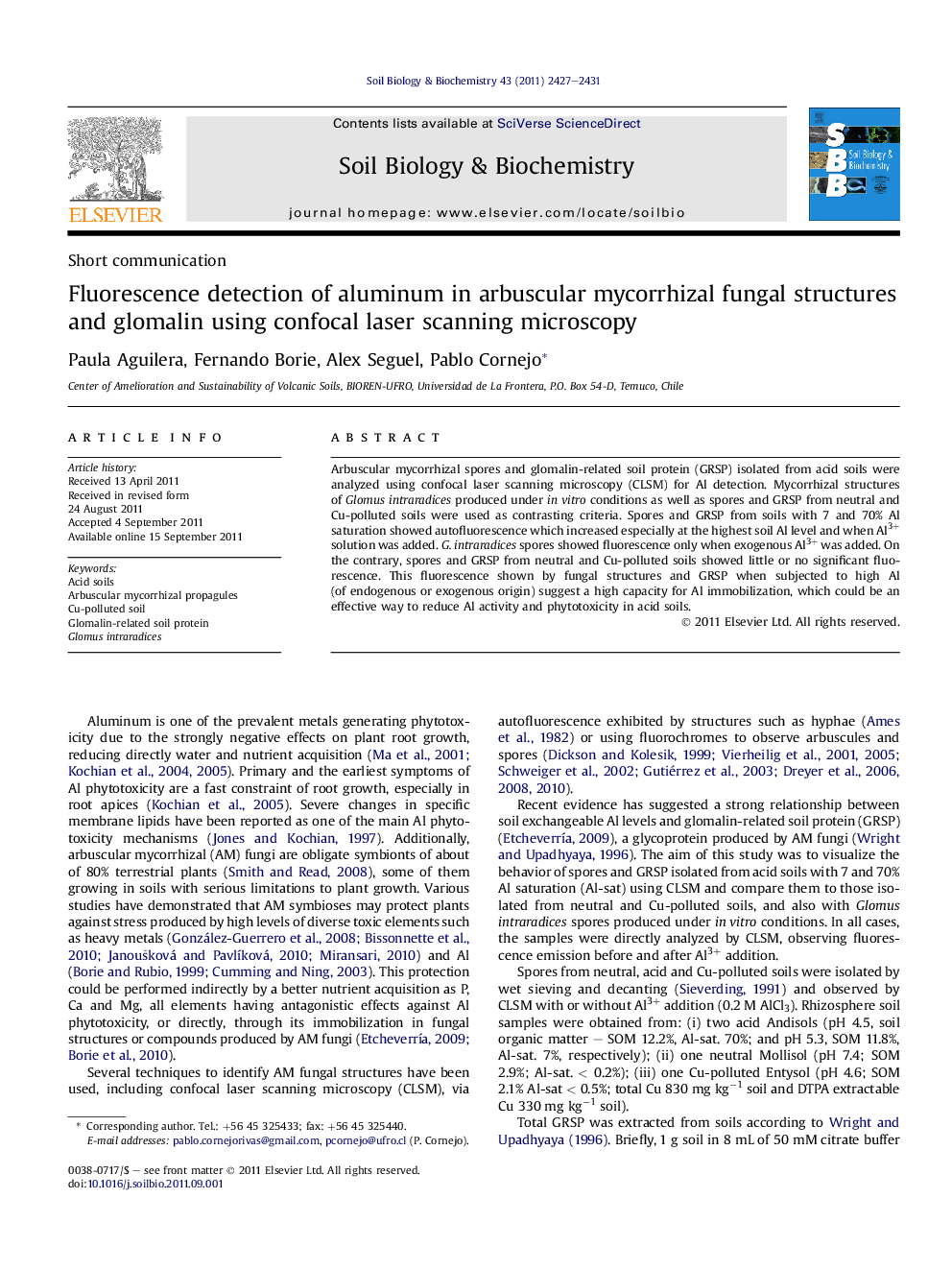| Article ID | Journal | Published Year | Pages | File Type |
|---|---|---|---|---|
| 2025166 | Soil Biology and Biochemistry | 2011 | 5 Pages |
Arbuscular mycorrhizal spores and glomalin-related soil protein (GRSP) isolated from acid soils were analyzed using confocal laser scanning microscopy (CLSM) for Al detection. Mycorrhizal structures of Glomus intraradices produced under in vitro conditions as well as spores and GRSP from neutral and Cu-polluted soils were used as contrasting criteria. Spores and GRSP from soils with 7 and 70% Al saturation showed autofluorescence which increased especially at the highest soil Al level and when Al3+ solution was added. G. intraradices spores showed fluorescence only when exogenous Al3+ was added. On the contrary, spores and GRSP from neutral and Cu-polluted soils showed little or no significant fluorescence. This fluorescence shown by fungal structures and GRSP when subjected to high Al (of endogenous or exogenous origin) suggest a high capacity for Al immobilization, which could be an effective way to reduce Al activity and phytotoxicity in acid soils.
► We detected interactions between aluminum and AM fungal structures using CLSM. ► Fungal and GRSP fluorescence emission could be related with Al levels in the medium. ► We suggest a key role of AM structures and GRSP in decreasing soil Al phytotoxicity.
